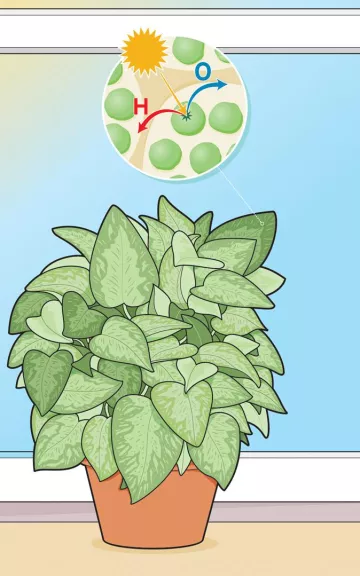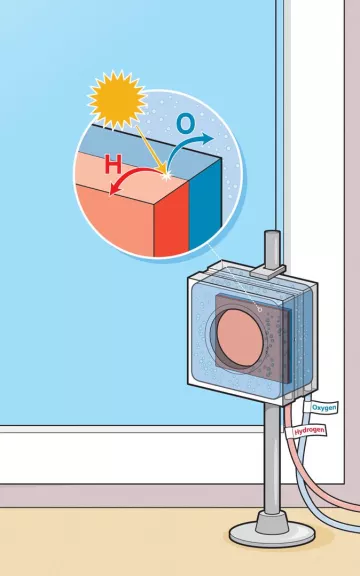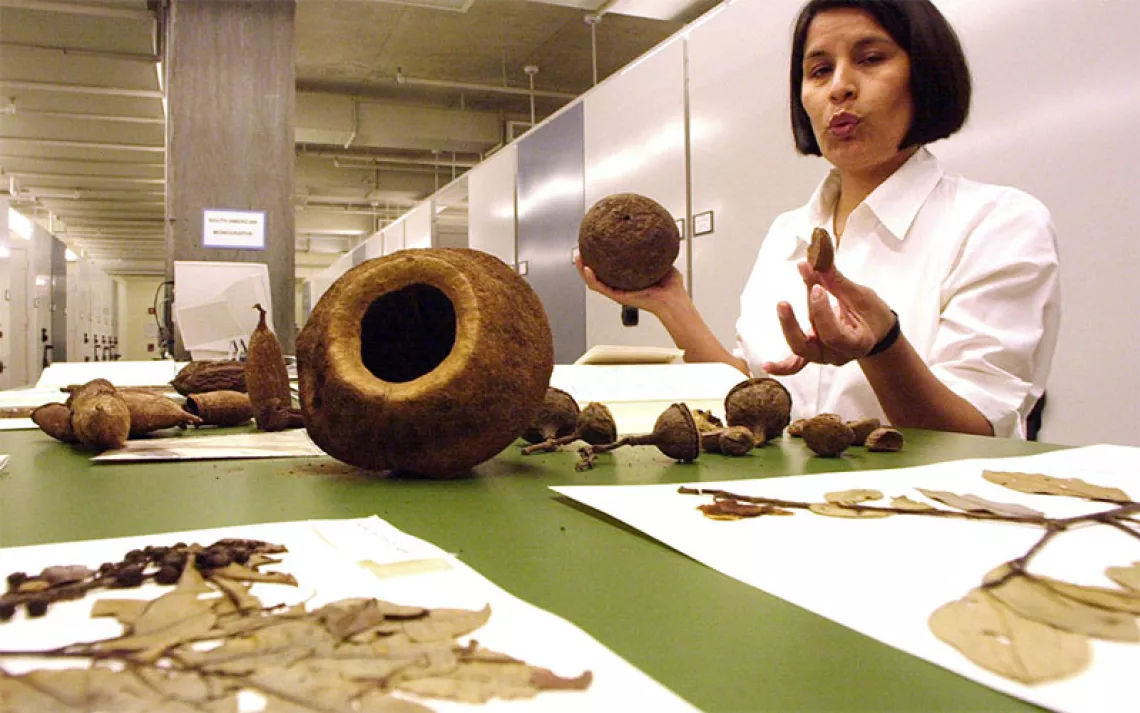A New Leaf
Plants make photosynthesis look easy. From the lowly dandelion to the towering pine, they all convert sunlight into chemicals that fuel the stuff of life. Engineers are now trying to replicate that conversion process using artificial leaves that cleanly create fuels for human use.
When sunlight hits the molecule chlorophyll inside the chloroplasts of a real leaf, its energy triggers a chemical reaction. The leaf splits water (H2O) into its component parts. The oxygen is released into the air, and other chemical reactions combine the hydrogen with carbon dioxide drawn from the air to create life-sustaining sugars and starches.
At the Joint Center for Artificial Photosynthesis, based at the California Institute of Technology, researchers recently unveiled their newest prototype for an artificial leaf. Inside a water-filled container, photovoltaic materials absorb sunlight and use the solar energy to split water.

The oxygen molecules bubble up and exit through a tube, while the hydrogen molecules bubble up through another tube and pass through a membrane for collection. That gaseous hydrogen can be used in a fuel cell to create electricity or be converted to a liquid "solar fuel" that might eventually replace gasoline and diesel. Intermittent solar energy can thus be collected in a fluid and portable form, unlike the batteries used to store energy from solar panels.

 The Magazine of The Sierra Club
The Magazine of The Sierra Club



